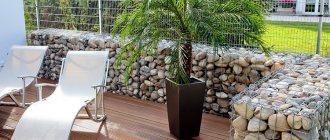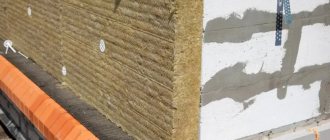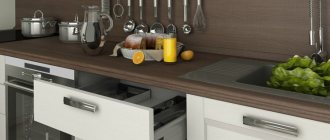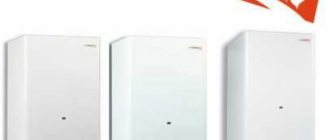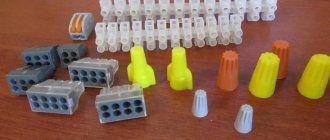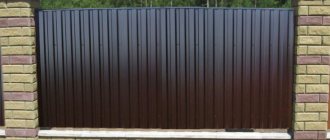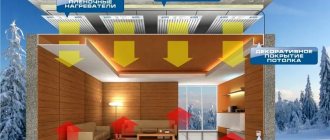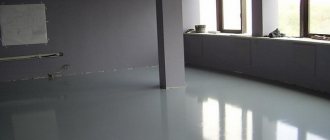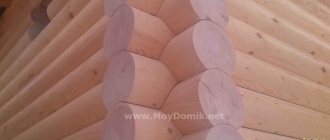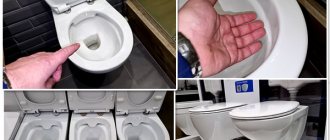- What it is?
- What are they made from?
- Features of application
- Kinds
- By functionality
- By design
- By opening method
- By glass type
- pros
- Cons of French windows
- Scope of application
- Possible installation options
- Opening expansion
- Partial demolition of the wall
- Complete removal of the window module
- Things to take care of
- Heating
- Decor
- Conclusion
In the last few years, the demand for the manufacture and installation of French windows instead of a balcony block has increased significantly. They are also called panoramic. Few people can explain where this name came from and what role France plays in their history. However, when we mention this term, we understand what we are talking about. So, let's look at the features of this design.
What it is?
This is a window module with a height from ceiling to floor. But, in addition to this function, it is also endowed with the functionality of a door. Such window systems visually expand the room, make the room lighter and more spacious, and provide a full view. In addition, they have a very attractive appearance.
As mentioned above, such designs are often called panoramic, but this is not entirely correct, since they differ from the so-called “foreign” ones by the absence of a doorway.
Nuances of facade design
Following the chosen stylistic direction, our designers gave preference to natural materials in the decor, combining transparent glass, warm cozy wood and environmentally friendly Japanese fiber cement siding in precise proportions. The color of the wooden planks that line parts of the facades is light brown, and the siding panels imitate marble - light and dark.
The terrace deserves special attention. It is very large, semi-open - only low glass sides act as fencing, as well as a partition made of vertical wooden slats. The result was a very elegant place, filled with air and light.
Conventionally, we divided this location into two zones. The first has a kitchenette with a sink, barbecue oven, work surface and storage space, as well as a dining table.
In the second there is a Japanese barrel-font Furaco with convenient steps. From the inside it is divided into two parts: the large one has seats for bathers, the small one has a wood-burning stove that maintains the optimal water temperature. It is especially unusual to swim in a furaco in the cool season - the sensations are similar to those experienced by a person immersed in a hot spring in winter Kamchatka. There is also a woodshed here - it’s convenient to take fuel for both the furaco stove and the barbecue.
The floor of the barbecue terrace is covered with a wooden board, the roof above the recreation area is common with the main part of the building, there is no canopy over the area with the Japanese plunge pool - you can take water and sun baths at the same time.
What are they made from?
Most manufacturers use 4 types of material:
- Aluminum.
- Tree.
- Fiberglass composite.
- Plastic.
An aluminum profile is considered an intermediate link (in terms of quality, price, appearance and other characteristics) between wooden and plastic models. Aluminum is quite lightweight, but at the same time very durable and reliable material. These are its main advantages. As a rule, aluminum profiles are used for cold glazing. However, the introduction of thermal breaking technology, which implies the presence of a heat-insulating layer between the internal and external profiles, has made it possible to use this material for warm glazing.
Wooden windows in the French style look stylish, elegant, and rich. In addition, they are environmentally friendly and also have excellent ventilation qualities, even when locked. Often larch, oak or pine are used in production. Each such material is quite demanding to process and also requires care. All these characteristics influenced the high cost of such window systems.
Fiberglass composite structures have already proven themselves to be very positive, although they appeared on the market quite recently. Their main advantages: high strength, low weight, low thermal conductivity. As for the disadvantages, at the moment consumers highlight only one disadvantage - high cost.
Plastic window blocks, including French ones, are considered the most common and affordable. Ease of care and processing, durability, relatively low price, and a large number of configuration options make this material so popular for several decades.
Projects of beautiful baths
The dimensions of the bath structure can be very small - literally for 1 person, or very spacious. In the latter case, it is necessary to build a real bath complex, including a swimming pool, a guest room, etc.
Any bathhouse includes a steam room, a washing room and a dressing room. Moreover, in a Russian log bath you can combine a washing room and a steam room. But if you build an option with a sauna, then the washing room and the steam room must be separated. Accordingly, neither the size of the bathhouse nor the number of rooms in it affect the attractiveness of the structure.
Whether a bathhouse is beautiful or not is determined by the style and material used:
- stone or brick - this material is used for a bathhouse if it is erected directly next to a residential building, and the latter is made, for example, in a “palace” or castle style;
- “wild” logs, that is, unprocessed tree trunks, are a classic of the genre; the log house does not possess architectural sophistication, and the attractiveness of a wooden bathhouse made of logs is based on individuality; slightly different sizes of logs, displacement during laying, wood pattern, wooden “lace” on the windows - all this makes the Russian bathhouse really beautiful;
- rounded log - the material is more homogeneous, which allows you to use various architectural techniques: build a complex porch, veranda with barbecue, etc.;
- timber is a universal building material with precise geometric dimensions; both rounded and profiled timber are used for bathhouses; the first imitates a log, but it is much easier and faster to lay; the profiled one forms a flat surface, and this does not look as beautiful as a log wall, but it allows you to plan a much more complex configuration of even a small bathhouse.
Bathhouse made of cylindrical logs
A rounded log is produced as follows: the tree trunk is cleared of bark and rounded, that is, trimmed on a machine, in order to obtain even round logs with the same diameter. Then the workpiece is cut to length - according to the dimensions required by the project, and bowls are cut out at the ends. Lumber is treated with antiseptics.
The advantages of a beautiful log bath are:
- wood retains its unique ability to create a microclimate; you don’t have to worry about excess moisture or excessive dryness;
- logs are the best possible heat-retaining material, which means not only thinner walls, but also lower heating costs;
- the uniformity of rounded logs simplifies installation and reduces construction time, the same quality allows you to plan and implement a more complex configuration;
- A bathhouse made of logs does not need either external or internal finishing - the wood is already beautiful.
The log house also has disadvantages:
- the material requires processing, that is, it will not be possible to prepare wood yourself;
- Professionals should be hired for construction.
Sauna made of rounded timber
It is sometimes difficult to determine from the appearance of the building whether a beautiful bathhouse was built from a cylindrical beam or from a rounded log. However, other user characteristics of the materials differ and are quite noticeable.
Profiled timber is made from dry wood - no more than 18% humidity, it has a specific shape. Tenons and grooves are formed on two opposite sides of the product. When laid, the protrusions and recesses form a kind of locking connection, which increases both the strength of the walls and their thermal insulation properties. In addition, installation on spikes is much easier and faster.
For a beautiful bathhouse made of timber, 2 options are used:
- D-shaped - the inner side of the beam is flat, and the outer is convex, the material imitates a log or a “block house” finish, the bathhouse does not differ in appearance from a log house, smooth internal walls allow the use of any finish;
- O-shaped - both the outer and inner sides of the beam are convex, which allows you to do without both external and internal finishing, while, unlike real rounded logs, the timber is laid more densely and does not need putty.
Features of application
Most often, such structures are installed by owners of private houses, using them in any room (kitchen, living room, bedroom, instead of the main exit, and so on). But due to their rich appearance, such systems are often used by apartment owners, installing them, as a rule, instead of a balcony block or between a loggia and a room. But then you will have to partially or completely destroy the wall, which must be load-bearing. We will talk about options for installing structural structures a little later.
Final stage
There is a significant difference here from installing ordinary plastic windows or doors. How are these elements installed? Craftsmen secure the frame with dowels in several places, then, without removing the spacer wedges, foam the space between the frame and the opening with mounting foam. All hope is that the foam will firmly hold the structure, and the quality of fastening with dowels does not play a key role. In most cases, such hack work passes. The windows are relatively light; the sashes are opened infrequently and very carefully.
This technology is not suitable for French windows. Large weight, frequent opening of the door, and the likelihood of slamming with great force significantly increase the load on the frame fastening hardware. You will never rely on foam; structures should only be supported by anchors. You can check this over time. Do not immediately foam the cracks; open/close the doors with great effort for several days. If construction dust appears on the floor between the frame and the opening, this is a problem; the anchors do not hold and are wobbly. Because of this, dust appears under the installation sites of the dowels. Strengthen your hold immediately.
Installing a French window block
If everything is fine, clean the surfaces from dust, thoroughly moisten them and foam them. Start foaming from bottom to top. Allow time for complete hardening. Using a sharp construction knife, cut off the excess that protrudes beyond the planes. Surfaces can be sealed with ordinary putty. If the structure on the dowels is held firmly, then cracks will not appear. If not, no finishing treatment will hide your defect. Always remember that foam is needed only for quick and high-quality insulation, and not for fixing structures.
Prices for polyurethane sealant
Polyurethane sealant
Kinds
Varieties of these window systems are distinguished based on the material of manufacture, types of glass, opening method and other characteristics. Above, we have already defined the types of windows with regard to the material involved in their manufacture. Let's take a closer look at the other most basic options.
| Characteristic | Varieties | |
| 1 | Material | Aluminum Tree Fiberglass composite Plastic |
| 2 | Functional | Accordion Window-portal |
| 3 | Glass type | Red-hot Triplex Thermopolished Electrochromic |
| 4 | By type of design | Sectional Solid |
| 5 | By opening method | Sliding Swing Parallel sliding |
By functionality
- Accordion (or book). Used in large rooms. The peculiarity of this type is that the door opens, folding according to the “accordion” principle, thereby providing a fairly wide passage.
- Portal window. In this structure, one or more doors can open completely, while performing the function of a door. Such a French window is usually installed instead of the main (emergency) exit from the house or instead of a balcony block.
By design
- Sectional. Manufacturers install partitions that divide the entire window system into several parts (the maximum number of sections is 7).
- Solid. There are no partitions dividing into sections.
By opening method
- Sliding. They are also called a book or an accordion. The doors in such modules open as wide as possible, like an accordion. Such windows are installed exclusively in spacious rooms.
- Swing. The opening principle is completely identical to a regular door. Such structures are mainly installed in rather narrow openings.
- Parallel sliding. Such blocks are the most popular among consumers. When opened, the sash moves to the side parallel to the frame. It is very convenient and practical.
By glass type
- Red-hot. It looks like ordinary sheet glass, but during its production, craftsmen heat the material to a temperature of 650-680 degrees. This allows you to significantly increase strength and load bearing capacity.
- Triplex. Consists of two parts, between which a film is installed. This type of glazing is very durable and resistant to heavy loads. In addition, when broken (which, by the way, is very difficult to do), glass does not shatter into thousands of small fragments, but crumbles into rounded fragments.
- Thermopolished. The peculiarity lies in the production principle. This type is obtained by pouring molten glass melt onto a layer of molten low-melting metal.
- Electrochromic, or, as it is also called, smart glass. The peculiarity is the presence of an electronic system for remote control of the level of transparency.
Window
Taras thought for a long time about how to install windows and found a simple but elegant solution.
Putty putty around the perimeter
I glued a special sealing tape on it so that later I could safely press the glass against the wood. He pressed the glass with temporary blocks, foamed the perimeter, when the foam dried, cut off all the excess. Then I glued the sealing tape again, but on the glass itself. On the street side, everything was secured with glazing beads.
Cons of French windows
The disadvantages include the following:
- Difficulty in maintenance, this is especially noticeable in multi-storey buildings, because such huge doors cannot be washed independently. To clean them, you have to resort to the help of professional industrial climbers.
- High price.
- Specifics of installation of the heating system.
- Difficult to install in apartments.
- The need for constant ventilation or air conditioning, especially in summer, since such structures allow the maximum amount of sunlight to pass through, which means the room will heat up more.
- A feeling of discomfort, as you constantly have to be “in sight.”
Possible installation options
Let us note that cottage owners are practically unlimited in their options when installing panoramic window units, which cannot be said about apartment owners in multi-storey buildings. It will be most convenient to prepare the opening at the construction stage. But what to do if the building was built a long time ago, but you still want to slightly modify the design, for example, of the living room or kitchen, making a room with a French window. What to do in such a situation? Let's consider the most optimal options for installing these window systems.
Opening expansion
This is one of the most common solutions when installing large-scale window modules. As a result of this procedure, the room will immediately become more spacious and brighter. Expand the opening vertically and horizontally according to the planned dimensions.
Partial demolition of the wall
If the window opening is wide enough, only the window sill is removed. Thus, the opening is expanded only downward.
Complete removal of the window module
This involves complete dismantling of the block under the window. After this, the craftsmen can install a French window.
Please note that any of the installation options for a panoramic structure must be performed by real professionals. Considering the scale and heavy weight, such installation is unacceptable to carry out independently, without having experience in this matter.
In addition, regardless of the option and installation location, some nuances must be taken into account, especially when expanding openings in apartment buildings. Such a decision is considered a redevelopment, so before implementation it is necessary to contact the housing inspectorate to obtain the appropriate permission. If the planned changes to the premises do not contradict the law, then no one will interfere with you. But difficulties may arise if the installation of a French window is planned in a panel house, where almost all the walls are load-bearing - their integrity is prohibited from being affected. It is also unlikely that you will be able to obtain permission to modify the opening in a monolithic frame building, as this may disrupt the harmonious appearance of the entire building.
Design and installation
Firstly, there is no point in dividing the French portal into separate squares in wide frames. Moreover, in this case additional reinforcement of the already heavy structure will be required.
Secondly, any French window must be manufactured and installed in such a way as to withstand the blows of heavy winds from the outside, and the blow from the inside even from a very heavy human body.
Therefore, simple “balcony” glazing is absolutely not suitable for the French system. Here you need a solid package design - high-quality, heavy, expensive. In addition, you will have to think especially about heating.
To correctly implement the “French project” in a window opening you will need:
- Use PVC window panels with metal or modified wood inserts.
- Install reinforced frames if we are talking about harsh climatic conditions.
- Install two-chamber (or better yet, three-chamber) double-glazed windows.
- To form packages, use exclusively tempered glass, 6-8 mm thick (depending on the height of the ceilings in the apartment).
- Use only the thickest anchor plates for fastening - made of steel from 4 mm thick.
- Provide additional window fasteners along its entire perimeter. The pitch of the anchor bolts (8 x 150 mm, in metal collets) screwed through the frame must be at least half a meter.
- Provide a protective barrier made of a thick metal rod to a height of at least 1 m for folding or hinged sections of French windows located in apartments on the upper floors of houses.
- Ensure high-quality foaming - layer-by-layer from the inside and outside, with the obligatory use of a special gun.
And of course, there can be no talk of “homemade” French windows. Only professional manufacturing and only professional installation.
Heating
When installing a French window (either instead of a balcony block or between the room and the balcony), people often encounter condensation. To avoid this phenomenon, heating is done underneath. But please note that, as a rule, installing only one heating system, even the best and most expensive one, may not be enough. To prevent humidity from appearing in the room, which will cause condensation, it is necessary to ensure good ventilation.
Considering the scale of such structures, it is obvious that in cold weather the heat outflow will be much greater than with conventional window systems. Therefore, even before installation, it is necessary to carefully consider the heating in the house or apartment. The most common options are installation of underfloor heating or autonomous heating. You can also install blocks with glass, the coating of which reflects infrared radiation. Such models retain heat in cold weather, and in hot weather, on the contrary, protect the room from overheating. The disadvantages of such inventions are their rather high cost, as well as their short service life - the service life of such a coating is only 7 years. After this time, it will be necessary to replace the glass.
Another option for heating a room with French windows is to install a warm baseboard. This is a relatively new technology that allows you to heat and retain heat in homes with large-scale window systems. Skirting boards are installed around the entire perimeter, which allows warm air to be distributed as evenly as possible. Such heating systems do not clutter up the room and do not limit the view, which is also considered a big advantage.
In addition, you can install in-floor convectors, thanks to which warm air will rise from under the window. A significant disadvantage of this type of heating is its rather high cost. It is also better to install such systems during the construction stage, since they are mounted on the floor.
Glazing
A very large part of the heat from the room escapes through glass, so there are many technologies to reduce heat loss. The most common of them:
- two-chamber or three-chamber frames, they have an air gap between the glass;
- the space between the glasses is filled with gas;
- A special coating is applied to the glass.
No frame or double-glazed windows will provide the same thermal insulation as cinder block or brickwork. Calculation of heat loss must be done very carefully, otherwise your panoramic window will release all the heat from your home.
Decor
One of the main advantages of the design is that such a structure itself serves as a decoration for any building without any additional decorative elements. For decorative purposes, such blocks can be tinted, curtained with light, translucent fabric or roller blinds, decorated with stained glass or sliding screens. Pleated blinds or classic roller blinds look good on voluminous window structures.
The choice of design option depends, as a rule, on the design of the room and, of course, on the preferences of the owners of the house. So, for example, a room whose interior is dominated by light, light colors is curtained with the same light, translucent, almost weightless fabric (organza is often used). Or, on the contrary, they can use curtains of a completely different shade to focus attention on this element.
Note. When decorating, it is not recommended to use heavy, very dense fabrics. The main rule that should be followed when choosing decor for a panoramic design is to emphasize the elegance and presentable appearance.
Decoration
Almost always, floor-to-ceiling French windows, especially in a private house, are not decorated at all. As a rule, such windows overlook the courtyard or garden.
However, if the windows face a busy street or abut another house, you can decorate panoramic windows with curtains made of light fabrics. For example, from organza, artificial silk, cambric or veil. Such curtains will not weigh down the interior and “eat up” the interior space.
One of the successful solutions is roller blinds or blinds. Such “clothing” for panoramic windows will not overload the space, but at the same time, it will cope perfectly with shading on an excessively sunny day.
French windows require you to think through the design in detail. If the space is decorated in a classic style, implying expensive furniture, paintings in gilded baguettes, complex crystal chandeliers and sconces, then you cannot do without curtains. Classic curtains made of taffeta, velvet or jacquard will add nobility and chic to the space.
Tips for choosing curtains
Curtains can either decorate or hopelessly ruin the interior. To avoid trouble, you need to follow some simple rules:
- High-quality natural fabrics are preferred. It’s worth taking a closer look at cool linen, fine silk, batiste cotton, expensive velvet, jacquard of unusual colors, taffeta, and the most delicate veil).
- Curtains should fit organically into the interior.
- When installing curtains, you need to take into account how easily they slide and slide. Additional installation of control mechanisms may be required.
Conclusion
In the article, we examined in detail the features, pros and cons, and what a French window means, and a selection of our photos will help you figure out how it looks in different rooms.
Before ordering the installation of panoramic structures, we recommend weighing the pros and cons. This applies to cost, maintenance, changes to heating and ventilation systems, appearance and other factors. And only after thinking through all the necessary details should you make a decision. If you are sure that a window from France will add harmony and comfort to your home, you can get down to business by choosing a reliable company that provides highly professional glazing services.
Tip 8: where to order?
A company that can be trusted to manufacture floor-to-ceiling windows must meet several requirements:
- At least five years of experience in the window market;
- Certified processor of a well-known profile system;
- Availability of design engineers on staff.
You shouldn’t be afraid of floor-to-ceiling windows; they need to be designed correctly. When the design is designed taking into account all the nuances and made from high-quality components, they will delight you for many years and give you an incredible feeling of unity with nature. It’s not for nothing that panoramic windows are so popular all over the world.
